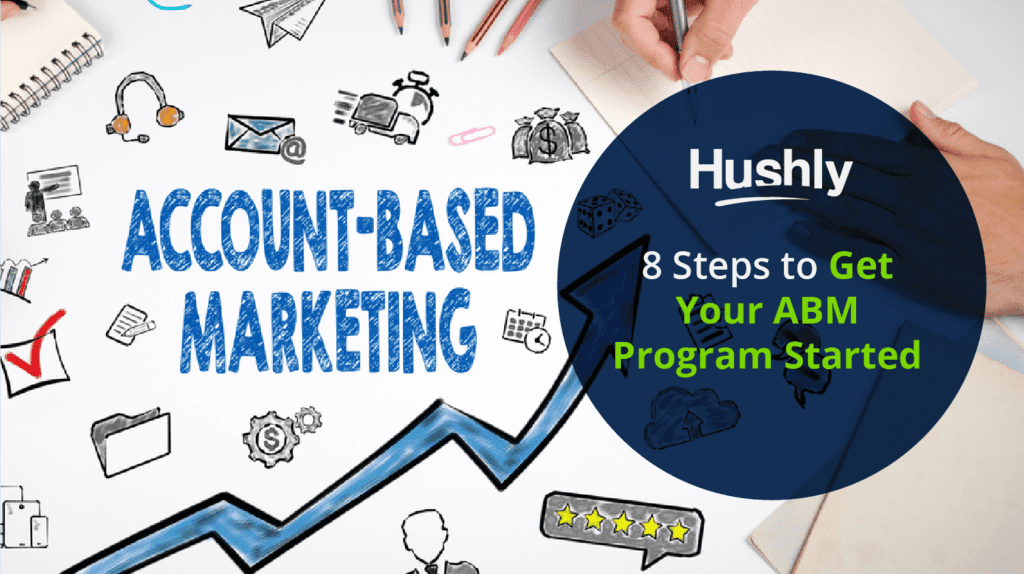Filters
Content Type
Topic
8 Steps to Get Your ABM Program Started
Businesses with long sales cycles have learned that account-based marketing is the most powerful strategy for long-term growth and customer satisfaction. ABM programs have several strengths that make them invaluable tools for any B2B marketing team.
For one, they’re more flexible than they may seem. In fact, a proper ABM program should be capable of guiding marketing campaigns for businesses of any size or scale.
Secondly, they naturally lend themselves to personalization. B2B customers today have access to more relevant and contextual advertising and information than ever before. If your marketing content and delivery channels don’t meet their unique desires, they’ll be able to find someone who does.
We’ll discuss the fundamentals of ABM and give you an 8-step guide for kick-starting your own ABM program in today’s blog.

The Meaning of ABM
ABM is short for account-based marketing. This is the practice of tailoring marketing strategies, materials, and resource investments to individual customers.
In essence, adopting ABM will mean your marketing strategy will look slightly different for each customer or segment you come up with.
Account-Based Marketing Examples
If you’re still unsure what we mean by account-based marketing, here are a couple of examples to clarify:
Robin
Robin designs office spaces for companies.
They utilized account-based principles to design a social media campaign that highlights some of their finest creations. By showing off their product (designs) in their most relevant and contextual state, Robin can target their advertising towards businesses that operate in similar areas and industries.
Shouting out their best customers is also a great way to build that relationship and deepen the trust between the two companies.
Practicing ABM made it easy for Robin to show customers what their office could look like if they work with them.
GumGum
GumGum is a marketing company that specializes in placing ads in places where customers are most likely to see them.
In 2018, they designed custom temporary tattoos that doubled as QR codes. When viewed through the GumGum app, these tattoos would become animated. They distributed these tattoos at Clorox’s annual iConnect conference, to a great reception.
GumGum’s commitment to ABM marketing meant they spent a lot of time and effort developing this idea for a single client. Their success proves the underlying principles of ABM.
8 Steps to Building Your Own ABM Program
Now that you know what ABM is and what it can look like, here are eight steps you can implement today to build your own ABM program.
1. Target Your First Accounts
You’ll need to start with some research.
Begin by finding a list of companies you would love to work with. Make sure this part is a joint effort between sales and marketing. Sales will want to be involved because they’re the ones hunting down those large targets.
These can be large companies, small companies, and every company in between. Don’t worry about finding the perfect match right away. This is just the information-gathering stage.
2. Categorize Targets into a Tier List
Next, you’ll want to categorize these potential targets based on a few parameters you can decide on in advance.
Think of things like how long the sales cycle is expected to take, how well you’re already positioned to take on this client, and how well your solutions fit with their pain points.
You can also consider the size of the company and whether you’ll be engaging in full 1:1 ABM marketing or taking a 1:few or 1:many approach.
3. Profile Your Buyers
Create some buyer personas.
These are profiles of the buyers involved in the decision-making process at the companies you plan to target.
ABM is all about forming real, human connections, so this part has to go right. If you do nothing else during the profiling stage, at least make sure you know who within the company is responsible for decision-making. This is your real target.
4. Assign Your ABM Managers
Once you know about your buyers, you can start assigning the ABM managers best suited to treat them.
This is where knowledge of your own company comes into play. Which of your marketing managers is right for each of your targets? There won’t be easy or clear answers here. You’ll need to go with your best judgment on who is right to connect with each buyer based on experience and expertise.
5. Define a Broad Strategy, Then Get Specific
One important factor when designing an ABM program is how well it will scale as you grow.
Your ABM program needs to have some broad strategies that apply to every customer. Things like researching the client first to determine who the buyers are is a great example. This step needs to take place every time but will yield different results for each company.
Your ABM philosophy should be shared by all of your employees. Make sure everyone is on the same page.
6. Determine What Success Looks Like
You’ll need to define some concrete metrics that will let you know if your plans are working or not.
Some of the best metrics to track when evaluating your ABM program are:
- Content Engagement: How well are your buyers responding to your content? Are they spending time with it? Learning from it? Sharing and engaging?
- Conversion Rate: A simple measure of how many prospects convert into buyers.
- Average Contract Value (ACV): An ideal metric for ABM. With ACV, you can track how much value you’re getting from each closed deal.
- Customer Lifetime Value (CLV): Closely related to ACV, CLV is a measure of how much value you’re getting out of each customer based on their lifecycle in your company. This number should grow over time if you’re holding onto your customers.
7. Optimize and Reiterate
No matter how well you design and implement your initial plan, it will never be perfect.
You should be gathering data from every step of the process to measure how well you’re performing and how smoothly your marketing and sales teams are adjusting to the transition.
Never be afraid to make quick and decisive changes if things aren’t working. The more data you have available to you, the easier it will be to tell when a new direction is needed.
8. Try Out a Platform Like Hushly
A content experience platform like Hushly can make creating and managing ABM campaigns incredibly easy. Our ABM tools enable easy creation and management of ABM assets.
Hushly can help you:
- Create custom landing pages
- Create dynamic webpages
- Target customers with pinpoint ABM email campaigns that speak directly to their pain points
- Keep track of huge quantities of valuable data and analyze that data for you, making sure your process is always becoming more optimized over time
Developing Your Own Account-Based Marketing Framework is Easier Than You Think
Although switching from traditional inbound/outbound marketing tactics to a full-scale ABM program will come with growing pains, the statistics surrounding ABM’s effectiveness are clear.
Once you’ve become comfortable with the system you create, the results will speak for themselves. In this way, you’ll find that overcoming the inertia and committing to the switch is actually the most difficult part.
Hushly is ready to help you design and manage an effective ABM campaign. Find out how we develop excellent ABM experiences for our clients.
The post 8 Steps to Get Your ABM Program Started appeared first on Hushly.



